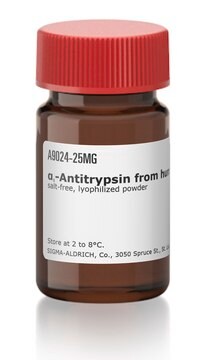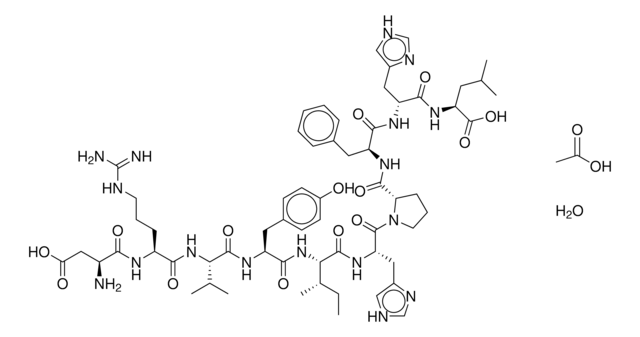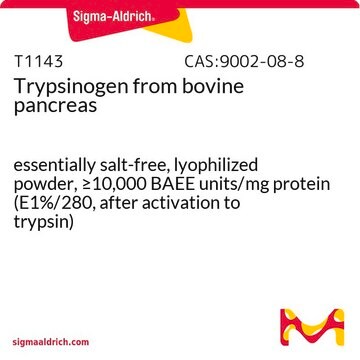C4163
α-Crystallin from bovine eye lens
lyophilized powder
Synonym(s):
alpha-Crystallin
Sign Into View Organizational & Contract Pricing
All Photos(1)
About This Item
Recommended Products
biological source
bovine eye (lens)
Assay
≥70% (biuret)
form
lyophilized powder
technique(s)
cell culture | mammalian: suitable
storage temp.
−20°C
Gene Information
bovine ... CRYAA(281718) , CRYAB(281719)
Application
α-Crystallin is a lens protein that contains two homologous subunits: αA- and αB-crystallins. α-Crystallin displays chaperone-like activity and plays an important role in maintaining lens transparency. It has been noted that in diabetic conditions of rats there is a decline in the chaperone activity of α-Crystallin. Research has shown that a dietary antioxidant, curcumin, can prevent this loss of chaperone activity.
Biochem/physiol Actions
α-Crystallin is a small heat-shock protein that has chaperone-like activity, preventing protein aggregation in vitro. Point mutations in α-crystallin genes are believed to be responsible for hereditary cataract development.
Storage Class Code
11 - Combustible Solids
WGK
WGK 3
Flash Point(F)
Not applicable
Flash Point(C)
Not applicable
Personal Protective Equipment
dust mask type N95 (US), Eyeshields, Gloves
Certificates of Analysis (COA)
Search for Certificates of Analysis (COA) by entering the products Lot/Batch Number. Lot and Batch Numbers can be found on a product’s label following the words ‘Lot’ or ‘Batch’.
Already Own This Product?
Find documentation for the products that you have recently purchased in the Document Library.
Laxman Mainali et al.
Current eye research, 46(2), 185-194 (2020-06-23)
Purpose/Aim: The amount of membrane-bound α-crystallin increases significantly with age and cataract formation, accompanied by a corresponding decline in the level of α-crystallin in the lens cytoplasm. The purpose of this research is to evaluate the binding affinity of α-crystallin
Binding of Alpha-Crystallin to Cortical and Nuclear Lens Lipid Membranes Derived from a Single Lens.
Timsina, et al.
International Journal of Molecular Sciences, 23 (2023)
Delay of diabetic cataract in rats by the antiglycating potential of cumin through modulation of α-crystallin chaperone activity.
Kumar PA., et al.
The Journal of Nutrition, 20, 553-562 (2009)
Raju Timsina et al.
Experimental eye research, 206, 108544-108544 (2021-03-22)
The concentration of α-crystallin decreases in the eye lens cytoplasm, with a corresponding increase in membrane-bound α-crystallin during cataract formation. The eye lens's fiber cell plasma membrane consists of extremely high cholesterol (Chol) content, forming cholesterol bilayer domains (CBDs) within
Pasupulati Anil Kumar et al.
IUBMB life, 61(5), 485-495 (2009-04-25)
Cataract, loss of eye lens transparency, is the leading cause of blindness worldwide. alpha-Crystallin, initially known as one of the major structural proteins of the eye lens, is composed of two homologous subunits alphaA- and alphaB-crystallins. It is convincingly established
Our team of scientists has experience in all areas of research including Life Science, Material Science, Chemical Synthesis, Chromatography, Analytical and many others.
Contact Technical Service








